A young, successful farmer from the Palnadu area of Andhra Pradesh was able to make his bamboo business a success. We shall now hear about his experiences, the specifics of the cultivation of bamboo trees, and the demand for and revenues generated by Mr. Upendra’s Bamboo farm. Let’s check out a way of earning 10 lakh rupees from bamboo cultivation below.
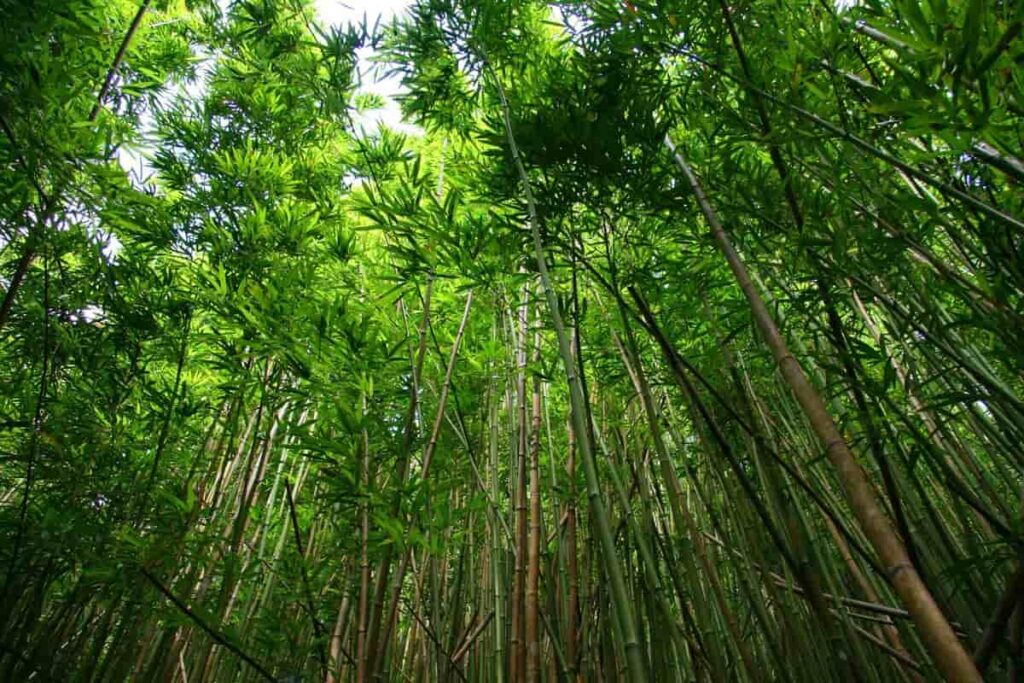
How long does Indian bamboo take to grow?
The grass family includes bamboo. As a colony plant, it replicates itself by drawing nutrients and energy from the soil around it. To a large extent, the new seedlings will replicate the established plants’ development patterns. Within a month, the seedlings will have sprung into a cane with branches and leaves.
The establishment period for bamboo is around three years. Once a colony is formed, the new branches that sprout in the spring will become larger and more frequent each year until the colony reaches maturity. Different species need between four and fifteen years to attain adult size. It all comes down to the right combination of plant type, soil, sunshine, temperature, and moisture.
When spring arrives, bamboo sprouts new canes, also known as culms. These seedlings sprout from the earth and develop in size over 60 days. The plant’s limbs and leaves will develop over these 60 days. It takes the bamboo cane 60 days to reach its full height and diameter, and then it stops growing completely. Unlike trees and many other plants, bamboo does not produce new growth from old stems. It renews its leaves annually, and a single cane can last up to a decade.
In case you missed it: Bamboo Rice Farming, Cultivation Practices
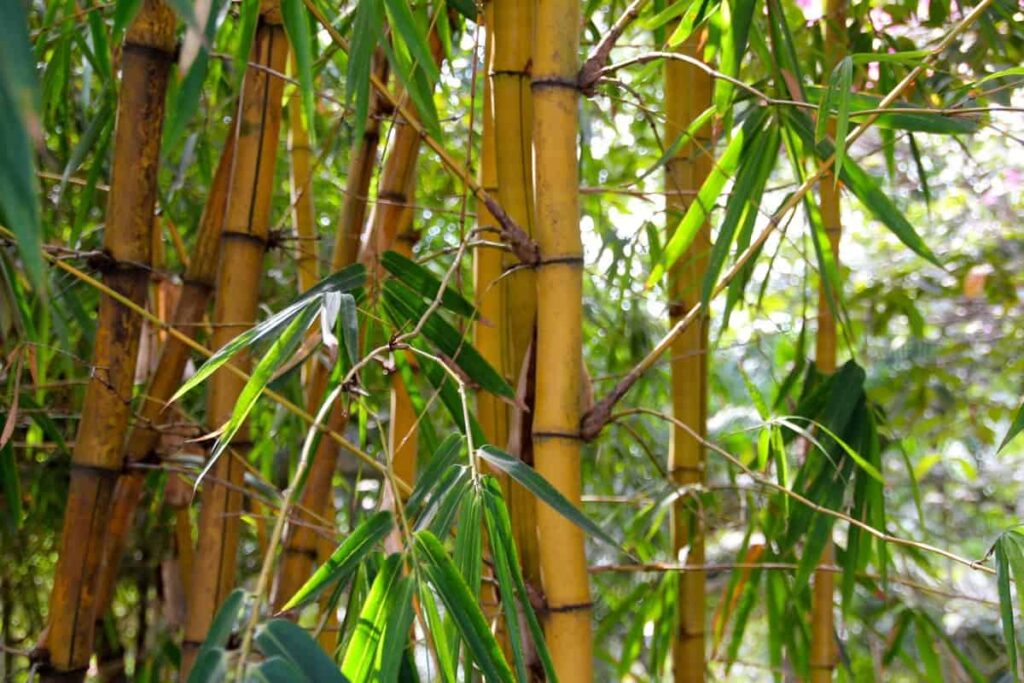
Does bamboo need much water?
You must first ensure that your bamboo receives enough water. Bamboo prefers abundant and deep irrigation (at least 8-12 inches) and adequate drainage. Make sure the water is dripping out of the bottom of the pot whenever you water your plants in containers instead of transplanting them for the time being. When watering plants in the ground, it’s better to give them an occasional thorough soaking than to water them lightly every day.
If you want to know how much and how frequently to water your bamboo in your specific microclimate, soil type, and season, you’ll need to carefully check it for a long time. Dig down 4 to 8 inches occasionally to test the soil moisture. The bamboo’s roots probably aren’t receiving enough water if the soil is dry at 4 inches. You must install your automated watering system with thorough hose watering once or twice weekly for the first several months.
Misting or spraying the leaves with water once a day is appropriate for the first two to four weeks in full sun, dry, windy, or hot conditions. Regular overhead watering can aid the rapid establishment of your bamboo, which will also lessen the quantity of leaf drop experienced during the changeover. Humidity nearly usually increases growth rate and final height. Thus, watering can be done year-round, even in extremely hot, dry conditions if desired.
In case you missed it: Bamboo Farming Project Report, Cost and Profit Details

What helps bamboo grow faster?
For plants to develop, photosynthesis must occur in the presence of sunlight. A bamboo plant’s growth rate is directly proportional to the amount of sunshine it receives since light acts as a “ food “ source for the plant. While some bamboo varieties do well in the shade, most bamboo plants need full sun to reach their full potential. Most types of bamboo need four hours of daily indirect sunshine.
It’s helpful to know how direct sunlight alters the leaf hue. Sunlight has a bleaching effect on plant life. A plant growing in full daylight may appear quite different from the identical plant growing in filtered sunlight for the other 16 hours of the day. You can succeed even if your land is poor.
Though it doesn’t have particular soil requirements, bamboo will grow more rapidly in nutrient-rich environments. Soil with a pH of 7 or neutral, sandy loam drains well and has a high concentration of organic matter is ideal. Bamboo plants need a lot of water. In general, it’s impossible to overwater plants. Water is essential during the first 1-3 years of a bamboo plant’s life while it is still being established.
More water should be applied in the summer and when there is much wind for quicker growing bamboo. Saturate the soil around the plant’s base and continue watering until you notice that the water is not being absorbed. When a bamboo plant is thirsty, its leaves will curl. The leaves will turn color and fall off if it doesn’t get water soon. The culms will brown and eventually die if they don’t have any foliage to photosynthesis with. To prevent this, we need to water the bamboo regularly till it becomes established.
In case you missed it: Bamboo Farming Information Guide For Beginners
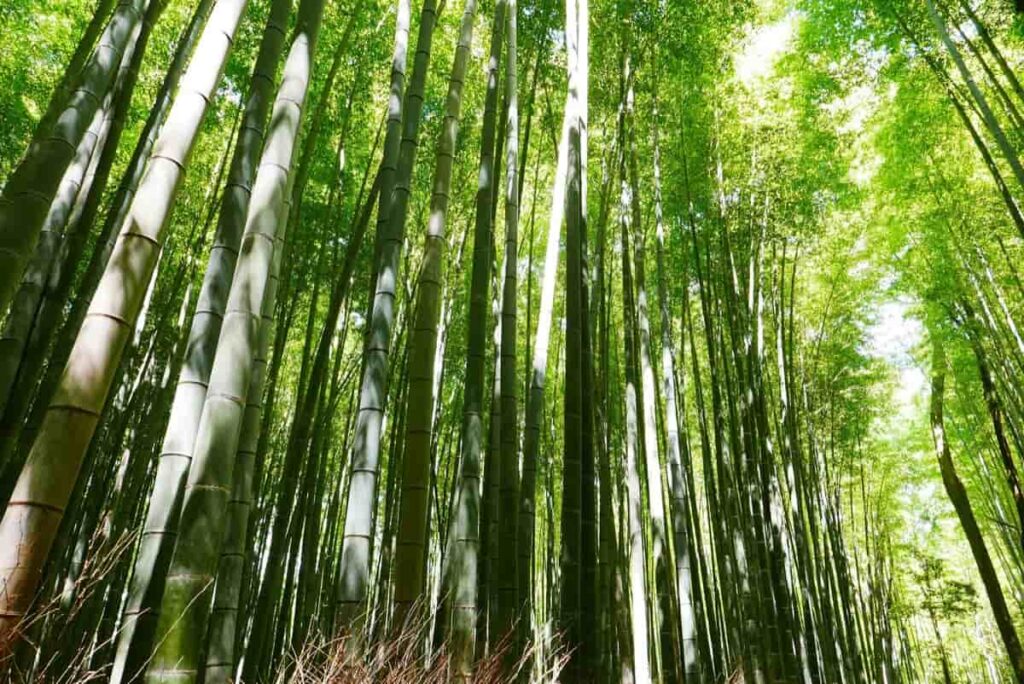
What kind of soil is best for bamboo?
Most bamboo species demand neutral to slightly acidic soils that are deep, well-drained, and productive. When soil lacks nutrients, adding them is typically worth the time and money. Compost, peat, nitrolized sawdust, manure, or bark chips are organic materials that can be added to sandy or alkaline soils to make them more suitable for plant growth. These components keep the soil wet, neutralize pH, and boost plant growth.
When soils are excessively alkaline, acid fertilizers can neutralize the pH. Soil with a pH of 5.5 or below should have lime added to raise the acidity to a more manageable 6.0 to 7.0. By adding sand and organic matter, clay soils may be more permeable to water. In most cases, bamboo’s root system rots if buried in water for more than a few weeks. Mounding the soil or digging ditches around the plants can also help drainage.
Bamboo can thrive even in highly shallow soils if the soil is kept fertile and wet. If you want to know how to amend best the soil where you live, it’s best to talk to a nurseryman in your area. Use a high-quality potting mix if you want to cultivate bamboo in pots. The majority of store-bought potting and nursery mixtures work just well.
Earning 10 lakh rupees from bamboo cultivation
The success story of Mr. Upendra
Mr. Upendra of Palnadu district, Andhra Pradesh, is a government teacher who owns 9 acres of land. This land had been empty for years, and he wanted to start cultivating something in it, as he didn’t want to waste the revenue he could generate from it. Initially, he thought of growing vegetables or any other cash crop, but he didn’t have the time and patience to care for the farm as he was already employed. He wanted to cultivate something low-maintenance and should be easy to take care of.
While searching for that crop, he found bamboo cultivation on the internet. It caught his attention. As bamboo cultivation requires very little care and is a long-time crop, he chose to cultivate it. He then gathered the resources and capital and started the work. Presently he is successful in harvesting bamboo from his farm. Below we will see the cultivation details of his bamboo farm and Mr. Upendra’s experiences while growing bamboo on his farm.
Bamboo cultivation details, according to Mr. Upendra
The bamboo used to be under the wild plant category, which involved forest clearance and other registrations to sell them. This made bamboo cultivation, sale, and transport hard for bamboo farmers. Keeping them in mind, the central government changed bamboo from the wild plants category to the grass category. This made them free of all the registrations, and it became very easy to grow, transport, and sell the bamboo, says Mr. Upendra.
Bamboo doesn’t need much water or fertilizer and can grow to 40 feet. Also, the Central government has issued a 50 percent subsidy for growing bamboo under the National Bamboo Mission scheme. For land preparation, the whole land should be cleaned appropriately and added animal manure after the plowing.
In case you missed it: Greenhouse Farming in New Zealand: How to Start, Crops, and Benefits
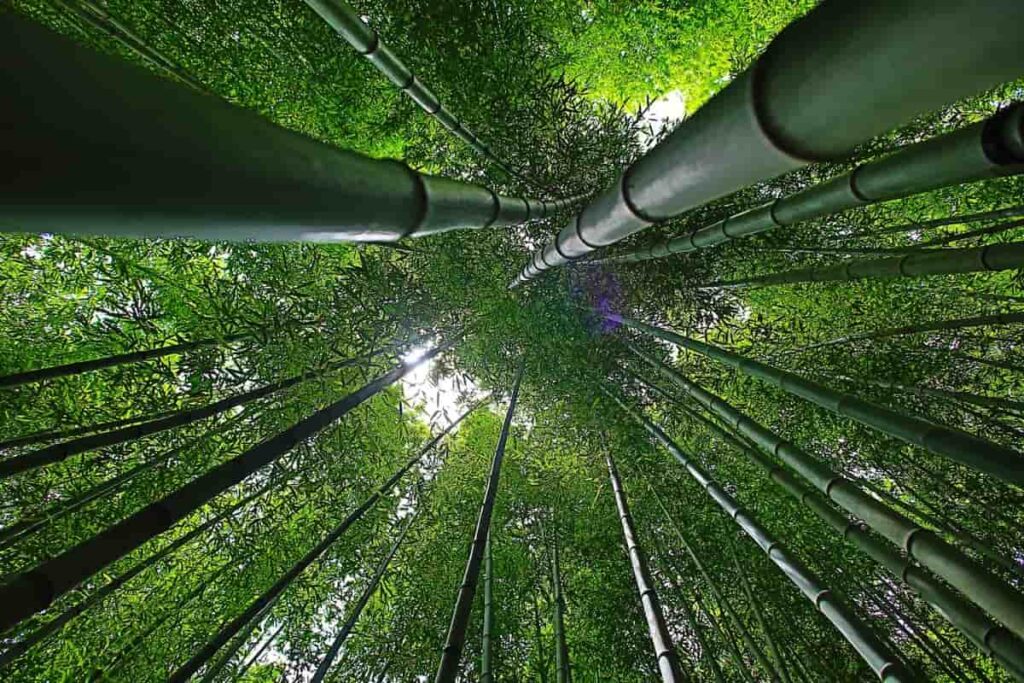
You can also add compost. Once you add all these elements, you have to plow your field again thoroughly before planting the saplings. He kept a gap of nearly 15 feet between each row and 6 feet between each plant in a row. He planted seven months of sapling into holes of 1 foot in width and 1 foot in depth. Once you plant the saplings, the plants should be watered thoroughly, says Mr. Upendra. Mr. Upendra waters his plant through drip irrigation. He arranged the drip watering system for his whole farm to water his bamboo plants.
He says that drip irrigation is ideal and saves much time. Water is essential for the first year of bamboo cultivation, especially in the summer. There is no weed problem for bamboo, says Mr. Upendra. Bamboo plants have heavy leaf drops and all the leaves that fall on the ground act as mulch. This natural mulching reduces the water evaporating from the soil and keeps plants away from weeds.
He added that this mulch while degrading into the soil, will act as fertilizer for bamboo plants. In this way, bamboo is a self-growing crop, creating its environment for growth. You won’t have anything to take care of, says Mr. Upendra. You won’t need to add any fertilizers during cultivation. Bamboo is a fast-growing plant; all the fertilizers are available from its mulching. Bamboo can last 70 to 80 years.
The first harvest starts after four years, and after the first harvest, you can harvest bamboo year after year with no investment. For a year, there will be a minimum of 6 to 7 shots from each tuber which will turn into 40 feet of bamboo over time. After four years, you can see that for each clump; there will be nearly 30 to 35 bamboo shoots, of which about 8 to 10 will reach a height of 40 feet and are ready to be harvested.
Investment and profit analysis of Mr. Upendra’s bamboo farm
As he spaced his plants 6 feet in a row and 15 feet between rows per acre, Mr. Upendra is cultivating nearly 450 plants. Each plant will take nearly 35 rupees as an investment, which means per acre, when miscellaneous costs are included, it can take nearly 20,000 rupees. For each acre, you can harvest about 4000 bamboos at the time of harvest after four years. For each bamboo, if you assume a minimum price of 35 rupees per stalk, Mr. Upendra had an income of nearly 1,40,000 rupees per acre.
When the investment is erased from this, you can see that his profit is nearly 1,20,000 rupees per acre. This means that for his whole 9 acres farm, he gets nearly 10,80,000 rupees as profit. This type of cultivation should not be done by people who want high month-to-month profits. As Mr. Upendra has empty land, he doesn’t want it to go to waste. Also, for farmers looking for high profits, you can intercrop between these bamboo plants.
In case you missed it: How to Control Pests and Diseases in Guava: Causes, Symptoms, Chemical, and Biological Management
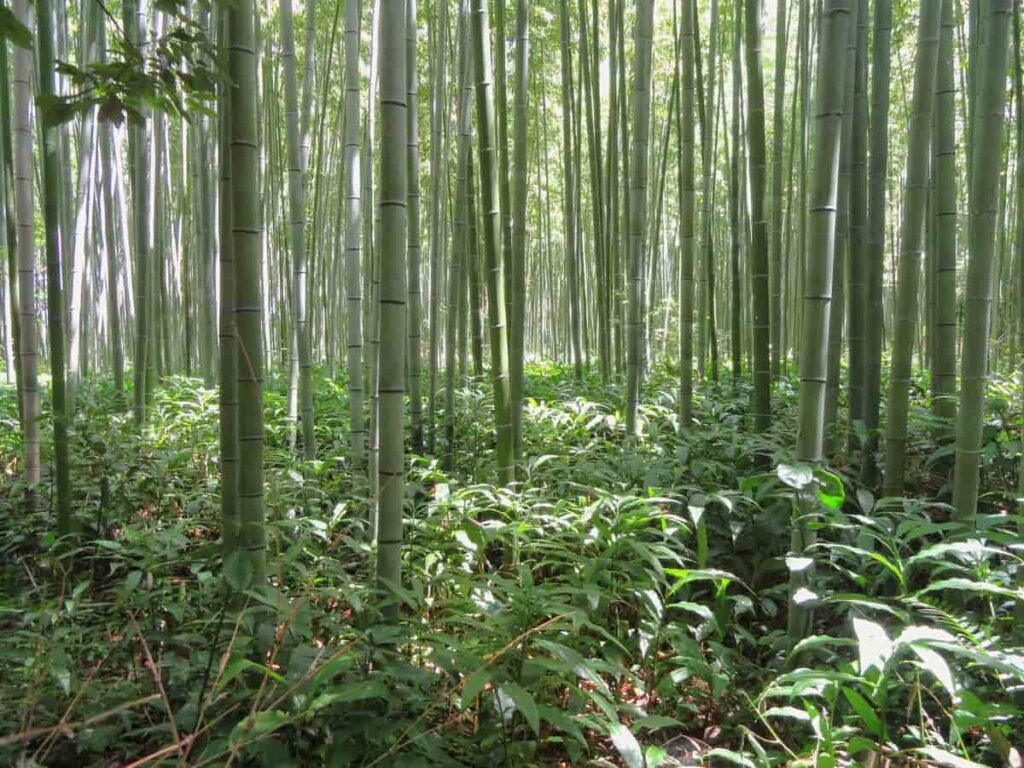
This works well too. You can grow any suitable plant between these bamboo plants and get income by selling the harvest. This won’t damage the bamboo plants. Mr. Upendra says he is very happy as he started bamboo Cultivation and is satisfied that he is making money off his empty land now. Even though it’s a time taking process, he is happy to start as it doesn’t need much effort and attention and will give profits year after year after the first harvest for generations.
- How to Make Houseplants Bushy: Effective Tips and Ideas
- Innovative Strategies for Boosting Coconut Pollination and Yield
- Pollination Strategies for Maximum Pumpkin Yield
- The Complete Guide to Chicken Fattening: Strategies for Maximum Growth
- Natural Solutions for Tulip Problems: 100% Effective Remedies for Leaf and Bulb-Related Issues
- Revolutionizing Citrus Preservation: Towards a Healthier, Greener Future
- Natural Solutions for Peony Leaf and Flower Problems: 100% Effective Remedies
- Maximizing Profits with Avocado Contract Farming in India: A Comprehensive Guide
- Natural Solutions for Hydrangea Problems: 100% Effective Remedies for Leaf and Flowers
- The Ultimate Guide to Choosing the Perfect Foliage Friend: Bringing Life Indoors
- From Sunlight to Sustainability: 15 Ways to Use Solar Technology in Agriculture
- The Ultimate Guide to Dong Tao Chicken: Exploring from History to Raising
- The Eco-Friendly Makeover: How to Convert Your Unused Swimming Pool into a Fish Pond
- Mastering the Art of Delaware Chicken Farming: Essentials for Healthy Backyard Flocks
- 20 Best Homemade Fertilizers for Money Plant: DIY Recipes and Application Methods
- How to Craft a Comprehensive Free-Range Chicken Farming Business Plan
- Brighten Your Flock: Raising Easter Egger Chickens for Beauty and Bounty
- How to Optimize Your Poultry Egg Farm Business Plan with These Strategies
- Subsidy for Spirulina Cultivation: How Indian Government Schemes Encouraging Spirulina Farmers
- Ultimate Guide to Raising Dominique Chickens: Breeding, Feeding, Egg-Production, and Care
- Mastering the Art of Raising Jersey Giant Chickens: Care, Feeding, and More
- Ultimate Guide to Raising Legbar Chickens: Breeding, Farming Practices, Diet, Egg-Production
- How to Raise Welsummer Chickens: A Comprehensive Guide for Beginners
- How to Protect Indoor Plants in Winter: A Comprehensive Guide
- Ultimate Guide to Grow Bag Gardening: Tips, Tricks, and Planting Ideas for Urban Gardeners
- Guide to Lotus Cultivation: How to Propagate, Plant, Grow, Care, Cost, and Profit
- Agriculture Drone Subsidy Scheme: Government Kisan Subsidy, License, and How to Apply Online
- Ultimate Guide to Raising Araucana Chickens: Breed Profile, Farming Economics, Diet, and Care
- Bringing Hydroponics to Classroom: Importance, Benefits of Learning for School Students
- Ultimate Guide to Raising Polish Chickens: Breed Profile, Farming Economics, Diet, and Care
- Ultimate Guide to Raising Australorp Chickens: Profile, Farming Economics, Egg Production, Diet, and Care
- Silkie Chicken Farming: Raising Practices, Varieties, Egg Production, Diet, and Care
- Sussex Chicken Farming: Raising Practices, Varieties, Egg Production, Diet and Care
- Homemade Feed Formulations for Livestock: Discover Cost-effective Starter to Finisher Feed Recipes
- 20 Best Pig Weight Gain Supplements: Top Swine Weight Gain Formulas
- Ultimate Guide to Elderberry Farming: Propagation, Planting, Yield, Cost, and Profit
I have 8500 sq m land .please guide and give consultancy me for Bamboo farming